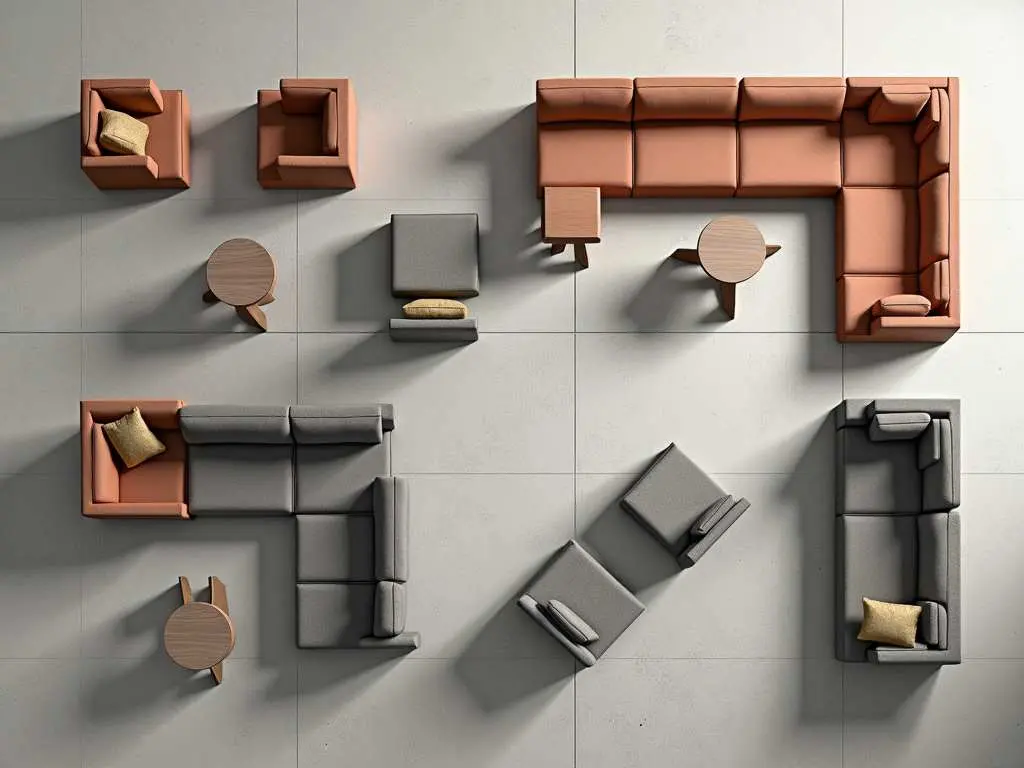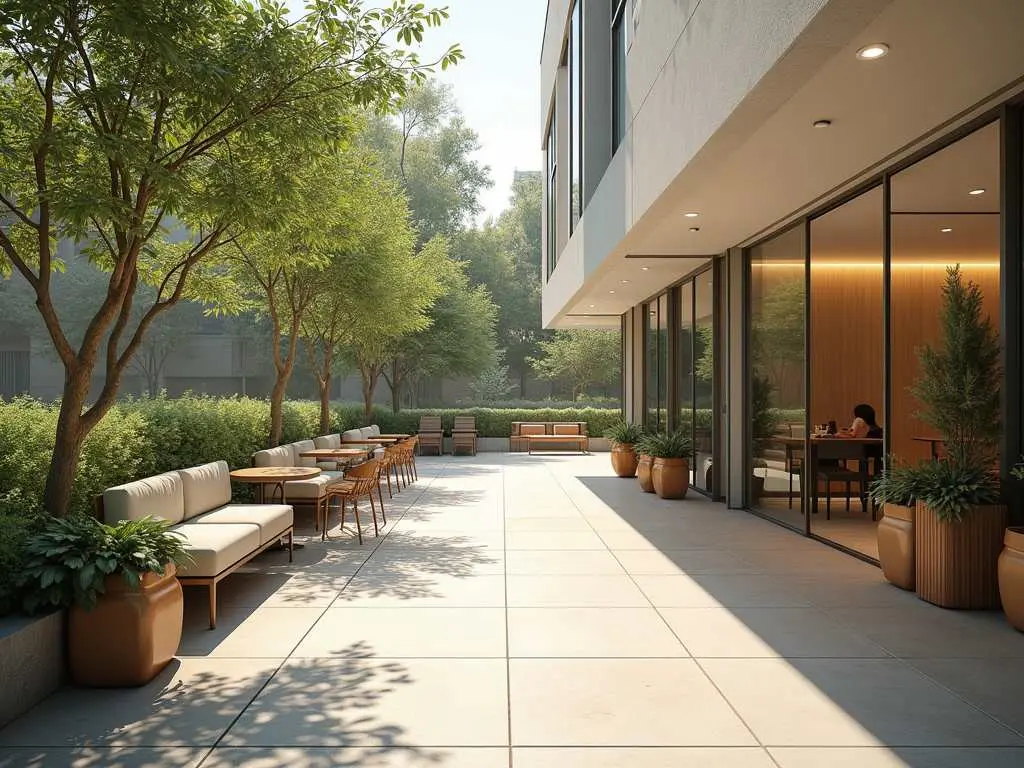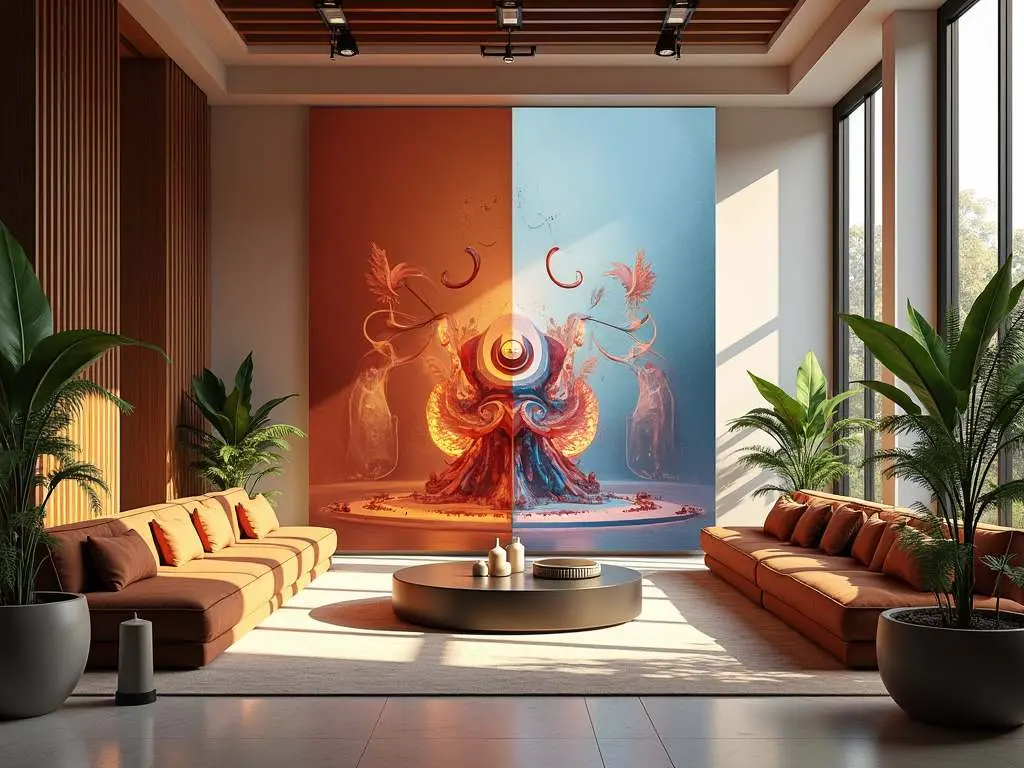As a hospitality-focused interior designer, I’ve seen how semi-public spaces can elevate both comfort and camaraderie. At Curvspace, we place a premium on designing transitional areas that welcome guests while respecting individual privacy. In this piece, we’ll examine what it takes to foster genuine hospitality in semi-public zones, from strategic seating arrangements to mood-enhancing décor. Gain insights into the subtle design choices that can turn these borderline spaces into inviting, functional extensions of any environment.
Jump to:
Understanding Semi-Public Spaces
Semi-public spaces are those areas that are neither fully public nor entirely private. They serve as a buffer zone, offering a sense of community while still providing a level of personal space. These spaces can include:
- Hotel lobbies
- Restaurant patios
- Office break areas
- Residential building courtyards
Key Elements of Semi-Public Spaces:
- Visual Connection: These spaces should allow for visual connectivity with main movement flows, enhancing safety and encouraging interaction.
- Flexible Seating: Furniture should be arranged to facilitate both social interaction and solitude.
- Soft Edges: Borders should be inviting yet define the space subtly, using changes in surface material or slight level differences.
Designing for Comfort and Connection
1. Seating Arrangements:

- Flexible Layouts: Use modular furniture that can be rearranged to suit different group sizes or individual needs. This encourages spontaneous meetings and fosters a sense of community.
- Intuitive Flow: Ensure that seating does not obstruct pathways, allowing for natural movement through the space.
2. Lighting and Ambiance:
- Natural Light: Maximize natural light to create a welcoming atmosphere. Use sheer curtains or blinds to control light intensity.
- Mood Lighting: Implement layered lighting with options for dimming to adjust the ambiance according to the time of day or event.
3. Color Schemes and Materials:
- Warm Tones: Use colors that evoke warmth and comfort, like earth tones or soft pastels, to make the space feel inviting.
- Natural Materials: Incorporate wood, stone, or plants to bring a touch of nature indoors, enhancing the feeling of tranquility.
4. Privacy and Intimacy:
- Visual Barriers: Use plants, screens, or architectural features to create semi-private zones within the larger space.
- Acoustic Design: Implement sound-absorbing materials to reduce noise levels, ensuring conversations remain private.
Encouraging Social Interaction

5. Interactive Elements:
- Art and Installations: Artwork or interactive installations can serve as conversation starters, drawing people together.
- Games and Activities: Provide games or communal activities like chess tables or communal bookshelves to encourage interaction.
6. Sensory Engagement:
- Scent: Use subtle, pleasant scents through diffusers or natural plants to enhance the sensory experience.
- Sound: Background music or the sound of water from a small fountain can create a soothing environment.
Practical Design Tips
7. Accessibility and Inclusivity:
- Universal Design: Ensure that the space is accessible to all, with considerations for mobility, sight, and hearing impairments.
- Cultural Sensitivity: Reflect local culture in design elements to make guests feel at home3.
8. Maintenance and Sustainability:
- Easy to Maintain: Choose materials and designs that are easy to clean and maintain, ensuring the space remains inviting.
- Eco-Friendly: Opt for sustainable materials and practices to appeal to environmentally conscious guests.
People Also Ask
Q1. What are the benefits of semi-public spaces in hospitality design?
A: Semi-public spaces foster a sense of community, provide a buffer between public and private areas, and enhance guest comfort by offering spaces for both social interaction and solitude.
Q2. How can lighting be used to enhance hospitality in semi-public spaces?
A: Lighting can set the mood, highlight architectural features, and create zones within the space. Using a mix of natural light, ambient lighting, and task lighting can cater to different activities and times of day.
Q3. What role does furniture play in semi-public spaces?
A: Furniture in semi-public spaces should be versatile, allowing for different configurations to suit various social dynamics. It should also be comfortable and inviting, encouraging guests to linger.
Conclusion

Creating hospitality in semi-public spaces is about striking a balance between openness and privacy, encouraging interaction while respecting individual comfort. By focusing on design elements like flexible seating, intuitive flow, and mood-enhancing décor, you can transform these transitional areas into welcoming, functional extensions of any environment. Explore these strategies to ensure your guests feel both connected and at ease.
References
- Sak, Zuzanna. “Semi-public Spaces and Community: A Guideline for Enhancing Sustainable Communities by Defining Public and Private Space Hierarchy.” HDM LTH, 2016.
Disclosure
Our content is reader-supported. This means if you click on some of our links, then we may earn a commission. Commissions do not affect our editor’s opinions or evaluations. Learn more about our editorial process.

About the Editorial Staff
The Curvspace editorial team comprises a diverse group of experts on intermediate and threshold spaces in homes and workplaces. Architects and interior designers, civil engineers and artists, environmental and behavioral psychologists, sociologists and anthropologists. All collaborate to create helpful content, that explores the full potential of these often-overlooked areas to enhance our daily lives.


